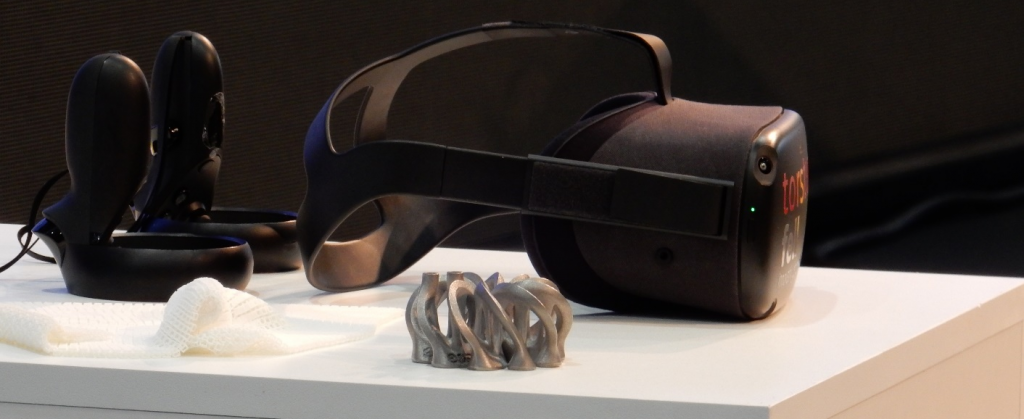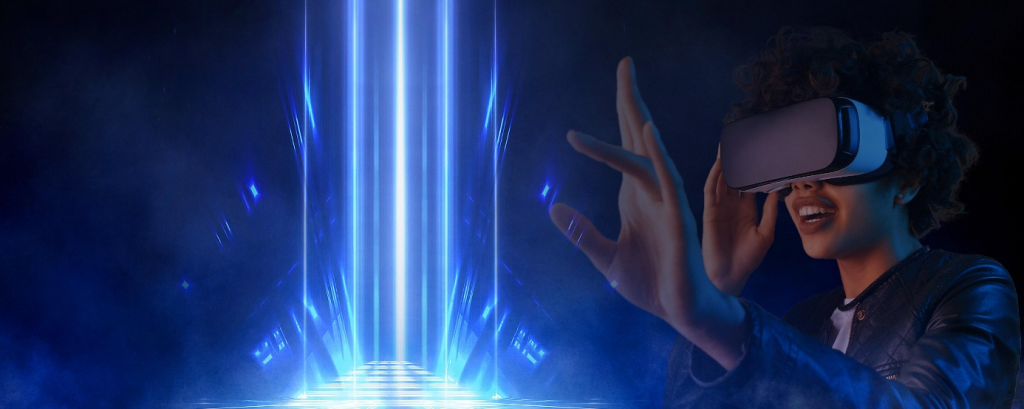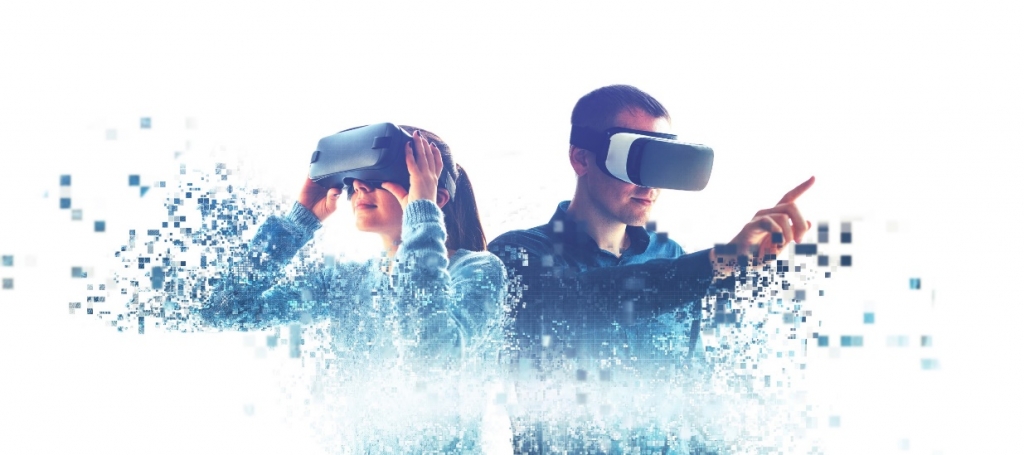In an increasingly competitive business environment, companies are in search for innovative ways to provide customers with engaging and high-quality product and brand experiences. Technologies such as Virtual Reality (VR) help marketers achieve their marketing goals by facilitating customer experience and decision-making at each stage of the customer journey. Already today VR is considered as a valuable marketing tool with applications ranging from product design, brand management and promotion to virtual shopping. This article reviews current marketing and consumer literature for understanding the impact of VR on user perceptions and behaviours as well as marketing success.
VR Technology, Concept and Challenges

Technology
The goal of VR is to enable users to experience an ever-improving illusion of another reality. This experience encompasses the exploration and interaction with a three-dimensional environment that give the user the illusion of being physically present. This environment may look and behave like reality or could be partly or completely different.
VR technology enables users to experience this virtual world via one or more of the five perceptual senses: hearing, vision, touch, taste, and smell. First, users can perceive simulated sounds using headphones, single speakers, or full surround systems. Second, users can watch VR content with the help of VR headsets that have built-in screens. This type of device is referred to as head-mounted displays (HMDs). However, there are also other forms of displays that can be used such as so-called powerwalls. Third, handheld controllers or other haptic devices can enhance the user experience by making use of motion and touch tracking, which allows the user to interact with simulated objects and at the same time can provide users with haptic feedback. Lastly, taste and smell are hardly considered in VR context.
Research Concept
Early attempts to conceptualize VR date back to 1970. Most early VR studies referred to VR as some form of technological system. Following studies point out that these early technological definitions of VR cannot serve as a conceptual framework for (managerial) decision-making and research. This is due to the lack of insights into the processes and effects of VR usage. Additionally, VR technology is evolving over time and so defining VR in this way leads to an arbitrary use of this definition. As a result, following studies focus their research on the exploration of user presence and the nature and characteristics of VR user experience rather than technological details. To the present day, a wide variety of definitions has evolved across diverse academic disciplines. However, there is a general consensus that VR stands out from other media in that it gives the user a heightened sense of ‘being present’ in the simulated world.
VR Challenges
Speaking about VR, two main challenges must be emphasized in technology development. First there are technological challenges. Current VR infrastructure is underdeveloped and there is a need for a uniform standard. Due to the existence of many competing platforms, such as Facebook, HTC and Sony, different standards in regard to hardware (e.g. screen) and software development (e.g. operating system, video content) have evolved. Furthermore, the realization of realistic and vivid representations, the complexity and costs of programming and the high risk of imperfections and bad user experiences to occur pose major challenges to developers.
Second, data privacy represents another major challenge. Companies can deal with rising customer concerns by building up a transparent and coherent data privacy policy.
VR User Experience

Most recent VR studies adopt a user experience point of view. Researchers consider VR experience from the physical (immersion) as well as the psychological (telepresence) perspective. Both concepts are related and cannot be separated entirely. While immersion is more technical (how good are sensorial information provided in VR), telepresence deals with the question how much users feel inside the virtual world.
Immersion
Immersion refers to “the feeling of being encircled by a digital environment” (Farah et al. 2019, p. 138) and “the objectively measurable property of presence” (Ahn and Bailenson 2011, p. 94). A high state of immersion expresses that the individual is fully immersed in the virtual environment, blocks out the real world around him or her, and pays focused attention to virtual objects and events.
VR potentially leads to higher levels of immersion, given its ability to provide the user with a vivid and interactive experience. The level of immersion provided by VR depends on the characteristics of the underlying VR system (i.e. input, output devices and VR content) and its ability to deliver a vivid and interactive illusion of reality by engaging the user’s perceptual senses. HMDs are capable to provide users with an inclusive, extensive, and surrounding VR experience and are therefore particularly suitable for creating a high level of immersion.
Telepresence
Research emphasizes telepresence as a core differentiator of VR and thus this psychological phenomenon receives enormous attention in research. The concept of telepresence is concerned with the mental state of feeling physical existence in a simulated environment. Steuer (1992) defines telepresence as “the experience of presence in an environment by means of a communication medium”. Telepresence occurs when the user perceives virtual sensory input in a way that he or she forms the belief that his or her actions impact the virtual environment and ultimately the individual experiences a feeling of physical existence in the simulated environment.
Telepresence is a state of consciousness and depends on individual user characteristics and the context of use. Besides that, the interactivity and perceived socialness of the experienced environment influence this feeling of presence. There is also evidence that highly immersive virtual environments are better suited to induce telepresence.
Impact of Virtual Product/Brand Presentations across the Customer Journey

Customer experience may be defined as “a customer’s journey with a firm over time […] across multiple touchpoints” (Lemon and Verhoef 2016, p. 6). The customer journey (consumer’s purchase-related decision-making process) consists of three stages: pre-purchase, purchase, and post-purchase stage. Customers’ motivations, goals, information, and benefits may evolve along the customer journey and therefore marketers must adjust their VR marketing communication accordingly. Ultimately, to measure and assess effectiveness of VR marketing, attitudinal and behavioural outcomes at each stage of the customer journey must be considered
Pre-Purchase Stage
VR product experience can be categorized between an indirect (traditional advertising) and a direct (product trial) product experience and can enhance product-related learning. By implementing sensory feedback and personalizing the VR environment, marketers can enhance consumer engagement and increase engagement time. Furthermore, in trial situations, consumers typically investigate products by touch. The haptic sensation of simulating touch in VR may lead to enhanced product learning and reduces the user’s feeling of uncertainty. Similarly, VR environments characterized by higher user control are perceived as less mediated (more real) and the resulting experience comes close to a real-life product trial. Lastly, consumers show more product-related learning when the transmitted information is referenced to the self in some way, called self-referencing effect.
Moreover, past research suggests that the application of the VR medium for brand management activities is more effective and experiential than conventional promotional activities. There is evidence that customers experience the presentation of branded content in VR as emotional and memorable. Emotional engaged customers enjoy the interaction through VR and tend to identify themselves with the presented brand. Through its ability to immerse customers in virtual environments, VR offers users the possibility to explore and evaluate simulated stores. This experiential value provided by VR can induce positive brand attitudes. Additionally, the interactivity and vividness of a VR environment and its ability to induce a feeling of presence are also positively related to consumer brand attitudes. Apart from that, VR may enable customers to connect with other users and to share experiences. This social dimension can be amplified by creating a more gamified environment in which users perform tasks together. This social aspect is very powerful regarding brand building.
Lastly, VR is already actively used in several industries to create, test, and simulate new products. It facilitates collaboration, managerial decision-making, and innovation by providing access to granular consumer data. Additionally, VR represents a valuable research and development tool for companies that allows them to examine consumer preferences and behaviours in a controllable and flexible environment. The use of VR applications at an early stage of product development enables designers and engineers to test and communicate design ideas in virtual environments that mimic real-world situations.
Purchase Stage
VR is about to transform the way people shop. Virtual stores enable customers to purchase goods from everywhere at any time. In this way, companies can create enhanced customer value by providing customers with more convenience in the purchase stage. Beyond that, VR potentially offers customer with an optimized, personalized, and gamified environment that enhances the overall customer experience. Giving the customer the possibility to test and interact with goods in VR, may reduce procedural uncertainty. Studies in the marketing domain point to the fact that virtual product presentations are very suitable to stimulate purchase intentions and have a positive impact on customers’ purchase outcomes and willingness to spend.
Post-Purchase Stage
Finally, VR applications have the potential to enhance post-purchase customer satisfaction and loyalty. The use of VR and its ability to provide the customer with additional product information in the purchase process and its interactive nature allow the user to understand and evaluate the product more accurately. This in general results in the formation of more appropriate product expectations and ultimately in higher customer satisfaction. Additionally, the experience of social interactions and themed or gamified environments were found to be positively related to customer loyalty.
Concluding Remarks
The realism of VR solutions has significantly improved in recent years, providing customers with highly immersive and interactive experiences that stimulates their perceptual senses and gives them the feeling of being physically present in the simulated environment. Marketing and consumer research finds evidence that VR can help marketers to achieve their marketing goals by facilitating customer experience and decision-making at each stage of the customer journey. However, remaining technological challenges and data privacy concerns must be resolved, so that marketers can exploit the full potential of VR in the future.
